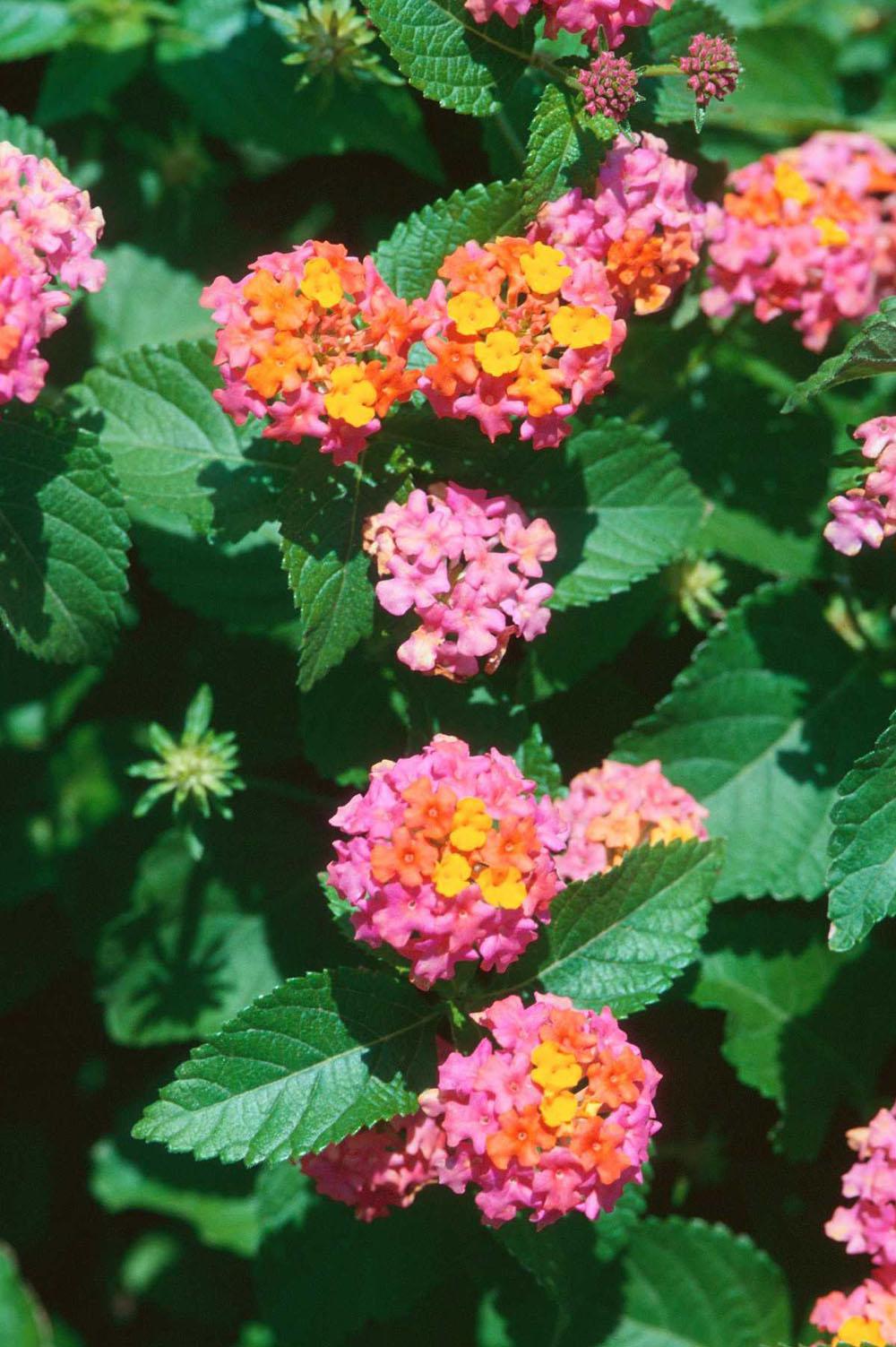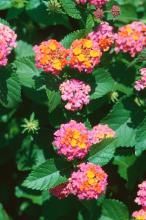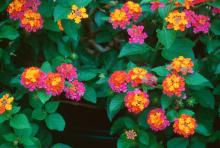Information Possibly Outdated
The information presented on this page was originally released on September 15, 2003. It may not be outdated, but please search our site for more current information. If you plan to quote or reference this information in a publication, please check with the Extension specialist or author before proceeding.
Winning lantanas can come from Mississippi
By Norman Winter
MSU Horticulturist
Central Mississippi Research & Extension Center
Sonrise was first, then came Samson (the perfect fall plant), and now Sonset is probably the prettiest lantana ever created. These are precious gifts from a divine creator, and developer Jim Covington will quickly give the glory where it is due.
Sonrise, the first lantana named by Covington, is vigorous and produces colors of yellow, orange and pink-magenta shades. Sonrise was discovered as a sport, or a mutation, from the old ham and eggs lantana that came through the 1983 winter without a whimper.
New Gold lantana, the first Mississippi Medallion winner, is great and is still a best seller because it is resistant to setting fruit. All three of the new lantanas from Clinton rarely have fruit, and that is one of the most important traits when selecting new varieties.
Sonrise has been featured in magazines nationwide and has performed extremely well in the trial grounds at the Truck Crops Branch Experiment Station in Crystal Springs.
Samson actually came from stock that has been growing in Oxford. Strangely enough, the flowers aren't the same color as the ones from the mother plant. They start off yellow and change to a brilliant orange. I grew this one at my house for a couple of years before it was named, and it has performed to expectations.
When you think about fall festivals, harvests and pumpkins, this lantana will come to mind. It is perfect to use in the landscape, in containers or as decorations.
Sonset is the most remarkable of any lantana I have had the opportunity to grow. I have seen bright colors on a couple of other selections, but they either don't grow over 6 inches high or set fruit like grape clusters and thus don't bloom much. Sonset starts off yellow and is followed by orange to red, magenta and purple. You will find tiny petals with more than one color.
The flowers are amazing in that you look at them at 8 a.m. and two hours later, they have changed. It is a kaleidoscope of ever-changing colors throughout the day. The plants are vigorous, but at just the right pace. The colors are bright, saturated and brilliant.
These lantanas were named and released out of Clinton, but commercial producers throughout the state and in Louisiana, Alabama and other states will welcome these flowers because they are superior in color, habit and hardiness.
You might be reluctant to think about trying a lantana this time of the year. One thing for sure, they are blooming now and will be blooming until the first really hard freeze. You can grow them in containers and protect them, or plant them now and mulch with a good layer of pine straw. Come next spring, you will be ahead of the game.
Lantanas need full sun and a fertile, well-drained bed to develop these vibrant colors. After they are established, they are very drought tolerant.
If your favorite garden center doesn't have these lantana varieties yet, ask them to get some for you. You will be doing them a favor if they haven't seen them. They may still think all new great plants come from California or Brazil, but I assure you, some come from Mississippi, too!




